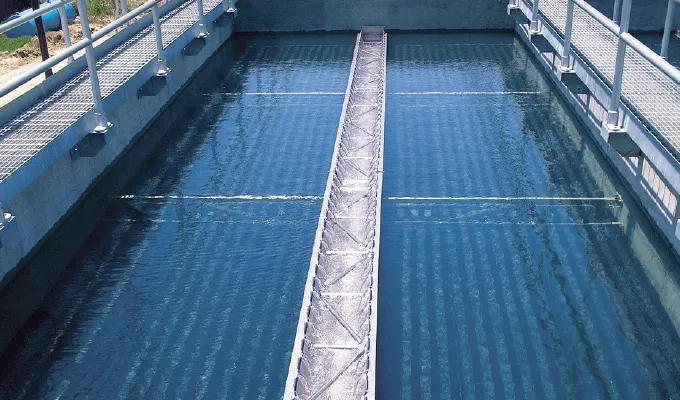
Bacteria In Wastewater Treatment
Bacteria in Wastewater Treatment: The Unsung Heroes of Environmental Management
Wastewater treatment is a critical process in maintaining public health and environmental sustainability. With the increasing urbanization and growing population, the need for efficient wastewater treatment systems has become more pronounced. Microorganisms, particularly bacteria, play an essential role in this process, forming the backbone of biological wastewater treatment methods. This article comprehensively explores the role of bacteria in wastewater treatment, addressing their functionalities, benefits, and the challenges they face, ultimately aiming to enhance the understanding of wastewater treatment professionals and facility managers.
Table of Contents
- Understanding Wastewater Treatment Processes
- The Role of Bacteria in Biological Treatment
- 2.1 Aerobic vs. Anaerobic Processes
- 2.2 Bacterial Communities in Wastewater
- Benefits of Bacteria in Wastewater Treatment
- Challenges and Innovations in Bacterial Wastewater Treatment
- Future Perspectives and Solutions
- Conclusion
1. Understanding Wastewater Treatment Processes
Wastewater treatment encompasses a series of processes designed to remove contaminants from domestic or industrial effluents before they are released into the environment. Primarily, these processes can be categorized into physical, chemical, and biological treatment methods. Biological treatment, where microorganisms break down organic matter, is widely adopted due to its cost-effectiveness and efficiency.
According to the United States Environmental Protection Agency (EPA), nearly 34% of the country’s municipal wastewater is treated using biological methods, highlighting the significance of these processes in contemporary wastewater management.
2. The Role of Bacteria in Biological Treatment
Bacteria are essential to biological treatment processes, functioning primarily to decompose organic materials, convert nutrients, and ensure the reduction of pathogens. They contribute to various treatment mechanisms, including:
2.1 Aerobic vs. Anaerobic Processes
Wastewater treatment can be broadly categorized into aerobic (requiring oxygen) and anaerobic (occurring in the absence of oxygen) processes.
-
Aerobic Treatment: In aerobic treatment systems, aerobic bacteria metabolize organic matter, requiring specific environmental conditions, including adequate oxygen supply. These bacteria are efficient in breaking down complex organic compounds into simpler forms.
- Anaerobic Treatment: Conversely, anaerobic bacteria thrive in low or no oxygen environments, decomposing organic materials into methane, carbon dioxide, and other by-products. This process is often utilized in anaerobic digesters, which not only reduce the volume of sludge but also produce biogas, an alternative energy source.
Recent studies have shown that anaerobic treatment systems can reduce sludge volume by up to 60%, making them a sustainable option in industrial applications.
2.2 Bacterial Communities in Wastewater
In wastewater, a complex community of bacteria thrives, with species diversity directly influencing system efficiency. Sulfate-reducing bacteria, nitrifying bacteria, and denitrifying bacteria are among the key players in nutrient removal processes.
Research published in leading environmental engineering journals highlights that specific microbial consortia can enhance nitrogen and phosphorus removal efficiencies by over 80%, addressing significant environmental concerns associated with nutrient loading in receiving waters.
3. Benefits of Bacteria in Wastewater Treatment
The benefits of utilizing bacteria in wastewater treatment are manifold:
-
Cost-Effective Solutions: Biological treatment processes utilizing bacteria often have lower operational costs compared to chemical treatment methods.
-
Sustainability: By processing organic waste and reducing sludge volume, bacteria contribute to sustainable waste management solutions.
- Nutrient Removal: Bacterial metabolism significantly aids in removing harmful nutrients such as nitrogen and phosphorus, helping to mitigate the risk of eutrophication in nearby water bodies.
According to recent industry analysis, the global demand for biological wastewater treatment technologies that leverage bacterial processes is projected to grow at a compound annual growth rate (CAGR) of 5.8% from 2021 to 2028, underscoring the increasing reliance on microbial solutions.
4. Challenges and Innovations in Bacterial Wastewater Treatment
Despite their crucial role, the application of bacterial technologies faces several challenges, including:
-
Environmental Fluctuations: Factors like temperature, pH, and toxic substances can disrupt bacterial activities, leading to reduced treatment efficiency.
- Bacterial Resistance: The emergence of antibiotic-resistant bacterial strains in wastewater poses a growing concern, complicating treatment processes and calling for more intensive management strategies.
Innovations to Address Challenges
-
Bioaugmentation: Introducing selected bacterial strains to enhance the functionality of existing microbial communities can improve treatment performance and stability.
-
Advanced Monitoring Technologies: Employing real-time monitoring systems can help in understanding the dynamics of bacterial populations, allowing for timely interventions to optimize treatment processes.
- Integration of Artificial Intelligence (AI): Utilizing AI and machine learning algorithms in monitoring bacterial behaviors can lead to more predictive modeling of treatment efficiencies, improving overall operational effectiveness.
5. Future Perspectives and Solutions
The conversation around bacteria in wastewater treatment is evolving with the advent of new technologies and practices. Potential future developments include:
-
Synthetic Biology: Engineering bacteria with enhanced properties for targeted treatment processes holds great promise for improving treatment performance in complex wastewater scenarios.
-
Circular Economy Models: By integrating wastewater treatment with resource recovery (e.g., nutrient extraction, biogas production), facilities can transition towards a circular economy model, promoting sustainability and resource efficiency.
- Collaboration and Research Expansion: Continued research collaboration between academia and industry will be pivotal in addressing emerging challenges and developing innovative bacterial applications in wastewater treatment.
Conclusion
The role of bacteria in wastewater treatment cannot be overstated. As unsung heroes of environmental management, these microorganisms are integral to the sustainability and efficiency of wastewater treatment systems. Addressing challenges through innovation and adopting a forward-thinking approach can significantly enhance the efficacy of bacterial applications in this critical field. Continued research and technological advancements promise a future where bacterial involvement in wastewater treatment becomes increasingly optimized, supporting global efforts to maintain water quality and protect ecosystems.
By leveraging this comprehensive understanding of bacteria in wastewater treatment, professionals in the field can make informed decisions that enhance treatment efficiencies and contribute to a sustainable environment. As the industry continues to evolve, embracing these insights will be crucial in tackling emerging challenges and capitalizing on opportunities that bacterial waste management presents.

